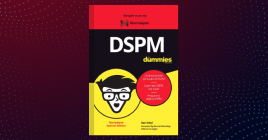Data Security Terminology
Access Control
Implements access rights and the policy of “least privilege,” where no individual possesses more authority to use specific compute resources, files, or services than the minimum required to fulfill their work role. Also enables logging usage of resources for forensic analysis.
Anomaly
Authentication
CSP
Cloud Native Database
CSPM
Stands for Cloud Security Posture Management, which analyzes the configuration of cloud infrastructure but lacks DSPM’s awareness of the context of stored data. CSPM can be helpful for discovering data in IaaS file storage and for performing risk and vulnerability management but plays a limited role in solving typical DSPM use cases.
DAM
DDR
DLP
Data Breach
A data breach refers to a security event where sensitive, protected, or confidential data is accessed or exposed without authorization. Such incidents may lead to the exposure of protected health information (PHI), personally identifiable information (PII), intellectual property, classified data, or other confidential information.
Data Categorization
Data Classification
Data Flow
Data Flow Diagram
Data Inventory
Data Protection
DSPM
Short for Data Security Posture Management, which helps keep an organization’s data safe and secure by telling you everything that affects security posture: where sensitive data is anywhere in your cloud environment, who can access these data, and specific risks to sensitive data. Responders then use this information to eradicate threats.
